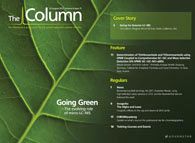After The Flood
The University of Queensland is using technology from AB Sciex (Framingham, Massachusetts, USA) to analyse how the floods of 2011 have affected water quality in Australia.
The University of Queensland is using technology from AB Sciex (Framingham, Massachusetts, USA) to analyse how the floods of 2011 have affected water quality in Australia. Approximately three-quarters of the state of Queensland were declared a disaster zone. The floods washed large amounts of debris into major water storage reservoirs and pressured the water treatment infrastructure to its limits.
Scientists at the university are using the technology to obtain information about how concentrations of contaminants have changed since the floods. Public health officials will then use the data to make decisions about the safety of the water and what action needs to be taken to aid recovery.
Jochen Mueller, Professor of Environmental Monitoring at the University of Queensland, commented: “Recovery is a long process, and it requires intricate, reliable and ongoing monitoring. We are contributing to efforts to better understand what people, fish, animals and coral are potentially getting exposed to. LC–MS-MS technology from AB Sciex is proving to be an ideal technology for analysing the environment. AB Sciex is also very helpful in providing service and support to allow us to pursue our goals.”
In addition, the University of Queensland has discovered herbicides along the inshore reefs on the Great Barrier Reef, at a relatively far distance from the agricultural areas where they are primarily used. The university has therefore developed a monitoring mechanism for herbicides and is using LC–MS–MS technology for the analysis.
For more information please visit www.absciex.com
This story originally appeared in The Column. Click here to view that issue.
Regulatory Deadlines and Supply Chain Challenges Take Center Stage in Nitrosamine Discussion
April 10th 2025During an LCGC International peer exchange, Aloka Srinivasan, Mayank Bhanti, and Amber Burch discussed the regulatory deadlines and supply chain challenges that come with nitrosamine analysis.











